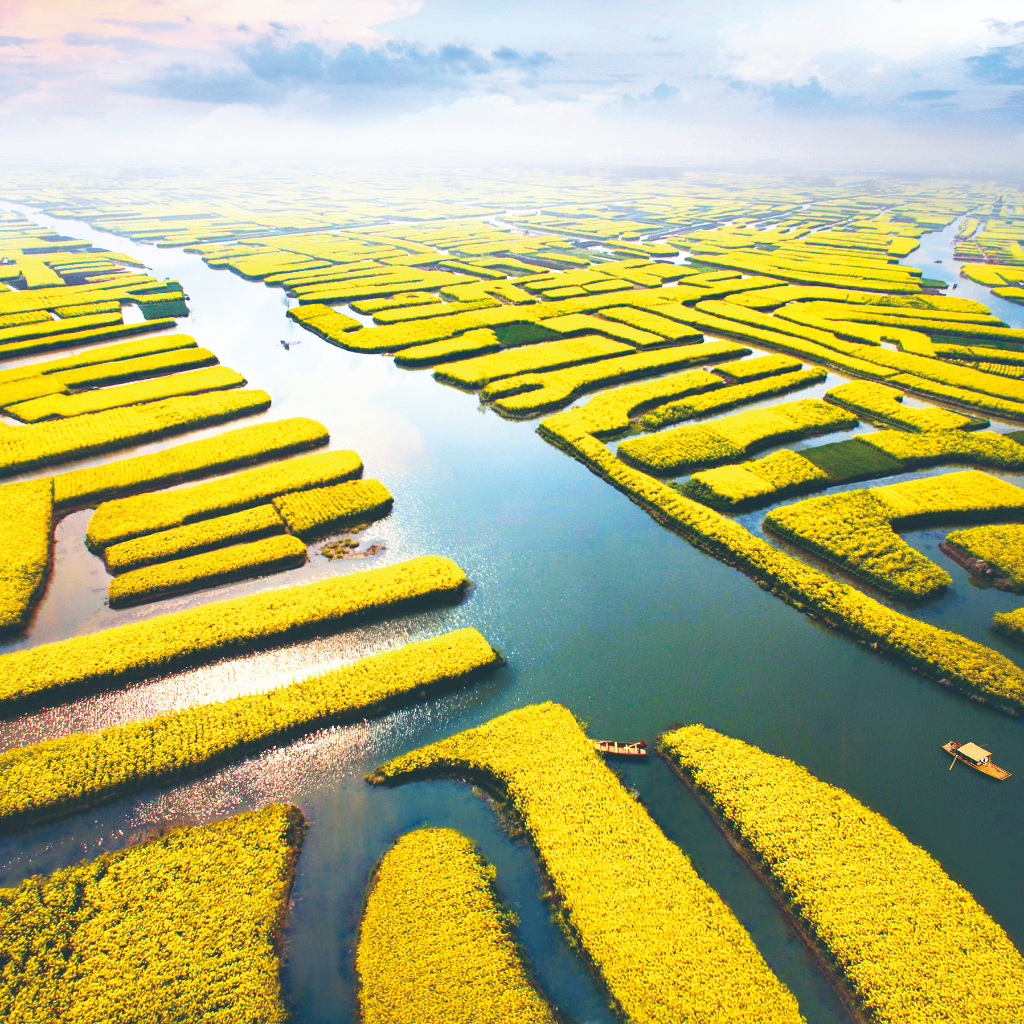Natural Landscape
[/vc_column_text][vc_separator color=”vista_blue”][/vc_column][/vc_row][vc_row][vc_column width=”1/3″][vc_single_image image=”1492″ img_size=”large”][/vc_column][vc_column width=”2/3″][vc_column_text]Yunlong Mountain
142 metres above sea level, this mountainous range is divided into nine sections, and you’re given an opportunity to behold the breathtaking view of the city panorama from the viewing deck perched on the 3rd section. The magnificently misty sceneries here are highly sought-after by nature’s lovers including prominent persons such as Liu Bang, Su Dongpo, Qianlong Emperor, Mao Zedong, Chiang Kai-shek to name among the hikers.[/vc_column_text][/vc_column][/vc_row][vc_row][vc_column width=”1/3″][vc_single_image image=”1493″ img_size=”large”][/vc_column][vc_column width=”2/3″][vc_column_text]
Yunlong Lake
A sister lake to West Lake, Hangzhou. Yunlong Lake is famous for its natural settings of Yunlong Mountain landscape. Measuring at a perimeter of 12km, the vast lake is one of the most breathtaking city lakes in China, mesmerising with different views every season. The main tourist hotspots here include a lake garden, a lake pavilion, Yunlong Water World Marina Promenade, and a lakefront sunshine beach.[/vc_column_text][/vc_column][/vc_row][vc_row][vc_column width=”1/3″][vc_single_image image=”1494″ img_size=”large”][/vc_column][vc_column width=”2/3″][vc_column_text]
“Ginkgo time tunnel” in Pizhou
Yao Zhuang Villiage of Pizhou which is under the administration of Xuzhou has a special country road named “Ginkgo time tunnel” with a length of 3 km and ginkgo interlacing on its two sides, which can be visited all year round. Especially during autumn and winter, “Ginkgo time tunnel” would be glittering with its golden colour with falling tree leaves all over the ground which attracts a lot of tourists and creates a world of fairy tale.[/vc_column_text][/vc_column][/vc_row][vc_row][vc_column][vc_column_text]
Historical Attractions
[/vc_column_text][vc_separator color=”vista_blue”][/vc_column][/vc_row][vc_row][vc_column width=”1/3″][vc_single_image image=”1495″ img_size=”large”][/vc_column][vc_column width=”2/3″][vc_column_text]Xuzhou Han Cultural Scenic Area
The Han Cultural Scenic Area consists of Three unique parts — Han Tombs, Han Terre Cotta Warriors and Han Sculptures. The tomb of the King of Chu located at Lion Mountain is said to be the largest tomb during the time of the Western Han Dynasty with over 4,000 delicate Han Terra Cotta Warriors as its burial objects. The Han sculptures are the wall paintings that the nobles of Han Dynasty drew on the tombs with a length of 300 meters, simple but amazing.[/vc_column_text][/vc_column][/vc_row][vc_row][vc_column width=”1/3″][vc_single_image image=”1496″ img_size=”large”][/vc_column][vc_column width=”2/3″][vc_column_text]
Horse-Training Terrace of Xiang Yu
206 BC, Xiang Yu, the Hegemon-King of Western Chu established his capital in Pengcheng (an old name for Xuzhou) after destroyed Qin Dynasty and built a high terrace for inspecting the training of his soldiers and warhorses. This Horse-Training Terrace is the only well-preserved relic from Western Chu which is now vividly displaying over ten historically famous events like “Feast at Swan Goose Gate”, “Treaty of the Hong Canal” etc.[/vc_column_text][/vc_column][/vc_row][vc_row][vc_column width=”1/3″][vc_single_image image=”1497″ img_size=”large”][/vc_column][vc_column width=”2/3″][vc_column_text]
Kuaizai Pavillion
Su Dongpo was invited by his friend Li Bangzhi to name a newly built pavilion after he was appointed as a local official in Xuzhou by the Song court. It was right in the middle of summer, he climbed the pavilion and wrote a poem “The fun of a virtuous man is to flow with the wind”. In history, there were three pavilions relating to Su Dongpo, the ones in Shandong and Hubei were already gone, and thus making the only preserved one in Xuzhou so much valuable.[/vc_column_text][/vc_column][/vc_row][vc_row][vc_column][vc_column_text]
Food & Beverage
[/vc_column_text][vc_separator color=”vista_blue”][/vc_column][/vc_row][vc_row][vc_column width=”1/3″][vc_single_image image=”1498″ img_size=”large”][/vc_column][vc_column width=”2/3″][vc_column_text]Dongpo Simmered Belly
During Song Dynasty, Xuzhou was constantly suffering from the floods. During those difficult times, Su Dongpo personally led people to fight against the floods. After the floods were successfully controlled, the natives of Xuzhou killed their livestock and send to Su Dongpo as an appreciation gift. Su cooked a dish of pork in return to the people, which is now well-known as the Dongpo Simmered Belly. Weak fire, less water and more alcohol are the special recipes for cooking this delicacy.[/vc_column_text][/vc_column][/vc_row][vc_row][vc_column width=”1/3″][vc_single_image image=”1499″ img_size=”large”][/vc_column][vc_column width=”2/3″][vc_column_text]
Sha Soup
Sha Soup is the most popular local cuisine in Xuzhou with a historic story about Qianlong Emperor. It uses chicken soup as its main ingredient together with wheat and rice powder. The soup is aromatic and tasty, people like to enjoy it together with fried dumplings and fried breadsticks.[/vc_column_text][/vc_column][/vc_row][vc_row][vc_column width=”1/3″][vc_single_image image=”1500″ img_size=”large”][/vc_column][vc_column width=”2/3″][vc_column_text]
Stewed Fish in Marinated Mutton
4,000 years ago, the wife of Pengzu occasionally cut the mutton and stuffed inside a fish caught by her son, Xi Ding, and then stewed the whole dish with mild fire. Fish and Mutton, literally formed the Chinese word: “Fresh”. And this dish has been inherited until today.[/vc_column_text][/vc_column][/vc_row][vc_row][vc_column][vc_column_text]
Arts & Crafts
[/vc_column_text][vc_separator color=”vista_blue”][/vc_column][/vc_row][vc_row][vc_column width=”1/3″][vc_single_image image=”1503″ img_size=”300×300″][/vc_column][vc_column width=”2/3″][vc_column_text]Xuzhou Sachet
Xuzhou Sachet is the product of ancient China’s agricultural traditions: “Man for farming, Woman for weaving”, and has been listed as the national intangible cultural heritage in 2008. It is delicate and elegant with multiple shapes such as “heart”, “shoes”, “butterflies” and so on. The content of the sachet are spices made from natural plants and it is covered with patterns showing good fortunes.[/vc_column_text][/vc_column][/vc_row][vc_row][vc_column width=”1/3″][vc_single_image image=”1504″ img_size=”large”][/vc_column][vc_column width=”2/3″][vc_column_text]
Pizhou Lion Head
The paper lion head of Pizhou has a long history and is being passed on by generation after generation. Traditional folk believes that lion dance can drive away from evil spirits. The lion dance mask has the features of sculpture and painting which show the unique and rough artistic style of Northern China and was listed as the first intangible cultural heritage in Jiangsu Province.[/vc_column_text][/vc_column][/vc_row][vc_row][vc_column][vc_btn title=”Xuzhou Booklet Download” style=”gradient” gradient_color_2=”vista-blue” align=”center” link=”url:https%3A%2F%2Ftravellutionmedia.com%2Feb%2Fxuzhouminibooklet.pdf||target:%20_blank|”][/vc_column][/vc_row]



